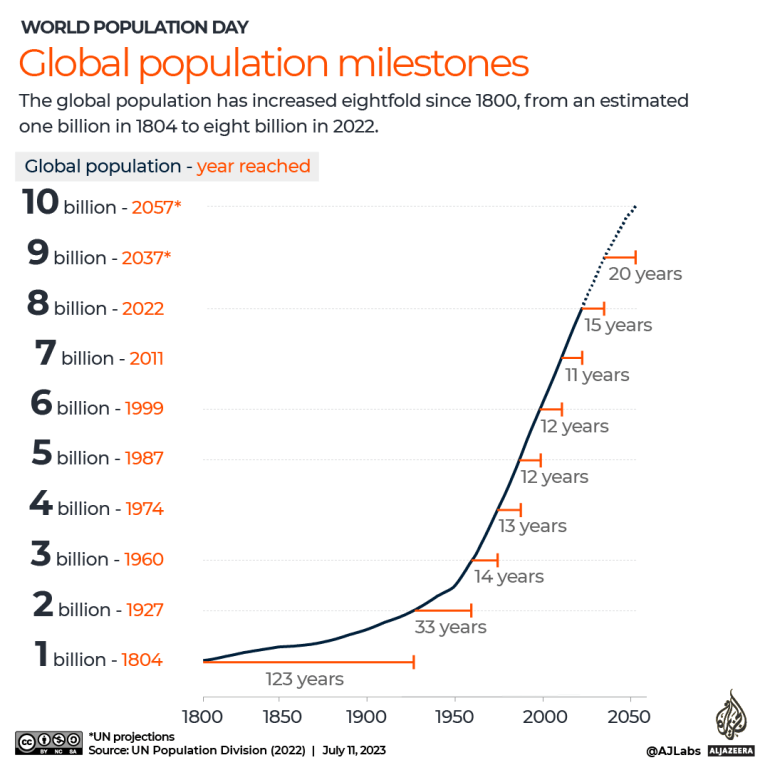World Population Day, observed on July 11th, serves as a reminder of the growing global population and the challenges it poses to various sectors, especially healthcare. As the population increases, the healthcare industry faces numerous obstacles in providing adequate and efficient services. This article delves into the significant challenges posed by population growth to healthcare systems worldwide.

Strain on Healthcare Infrastructure
The flourishing global population places immense pressure on healthcare infrastructure. Hospitals and clinics often struggle to accommodate the rising number of patients, leading to overcrowded facilities and long waiting times. This strain can result in inadequate care and a decline in the quality of services provided.
The lack of infrastructure is more pronounced in developing countries where resources are limited. According to the World Health Organization (WHO), nearly 50% of the world’s population lacks access to essential health services, highlighting significant disparities in healthcare access and quality.
Shortage of Healthcare Professionals
World Population Day reminds us about the growing population of the world. A growing population worsens the shortage of healthcare professionals. The demand for doctors, nurses, and other healthcare workers far outstrips the supply, particularly in rural and underserved areas. This shortage can lead to burnout among existing staff, further diminishing the quality of care.
The WHO estimates a global shortage of 18 million health workers by 2030, primarily in low- and middle-income countries. Efforts to train and retain healthcare professionals are crucial to addressing this challenge. However, this requires substantial investment in education and incentives to work in less desirable locations.
Rising Healthcare Costs
Increased demand for healthcare services inevitably leads to rising costs. Governments and healthcare providers struggle to keep up with the financial demands of a growing population. The costs associated with healthcare infrastructure, medical supplies, and salaries for healthcare professionals continue to escalate.
In the United States, healthcare spending reached $3.8 trillion in 2019, and it is projected to grow at an average annual rate of 5.4% from 2019 to 2028, according to the Centers for Medicare & Medicaid Services (CMS). This trend is indicative of the financial strain faced by many countries worldwide.
Challenges in Disease Management
Managing diseases becomes increasingly complex with a larger population. Infectious diseases can spread more rapidly in densely populated areas, making containment and treatment more challenging. Additionally, the rise in non-communicable diseases such as diabetes, heart disease, and cancer places further strain on healthcare systems.
For instance, the COVID-19 pandemic highlighted the vulnerabilities of healthcare systems globally. Countries with dense populations, such as India and Brazil, faced significant challenges in managing the outbreak due to limited healthcare resources and infrastructure.

Strategies to Address Challenges
World Population Day Addressing the challenges posed by population growth requires a multifaceted approach. Here are five key strategies:
- Investing in Healthcare Infrastructure: Governments and private sectors must invest in building and upgrading healthcare facilities to accommodate the growing population.
- Expanding Healthcare Workforce: Increasing the number of trained healthcare professionals through education and training programs is essential.
- Implementing Technology: Utilizing telemedicine and other technological advancements can help bridge the gap in healthcare access and efficiency.
- Promoting Preventive Healthcare: Emphasizing preventive measures can reduce the burden of disease and lower healthcare costs in the long run.
- Enhancing Healthcare Policies: Governments need to implement policies that support sustainable healthcare systems and address the needs of the growing population.
Healthcare industry working on World Population Day
World Population Day underscores the critical need to address the healthcare challenges brought by an expanding global population. The healthcare industry must evolve to meet increasing demands, necessitating strategic investments in infrastructure, workforce expansion, and technological advancements. Governments and private sectors should prioritize policy reforms and innovative solutions to enhance healthcare accessibility and efficiency. Preventive healthcare measures and education can reduce disease burden and costs. By proactively addressing these issues, it is possible to alleviate the strain on healthcare systems, ensuring that quality care remains accessible to all, irrespective of geographical and economic disparities. This concerted effort is essential for sustainable global health.
Read about more healthcare days to observe, in this article, which provides a comprehensive list and detailed descriptions of significant events throughout the year. This resource is invaluable for anyone looking to stay informed and play an active role in promoting health awareness and education. By marking these dates on your calendar, you can engage with various initiatives, support relevant causes, and contribute to community health efforts that make a difference.


